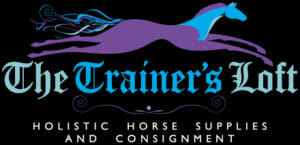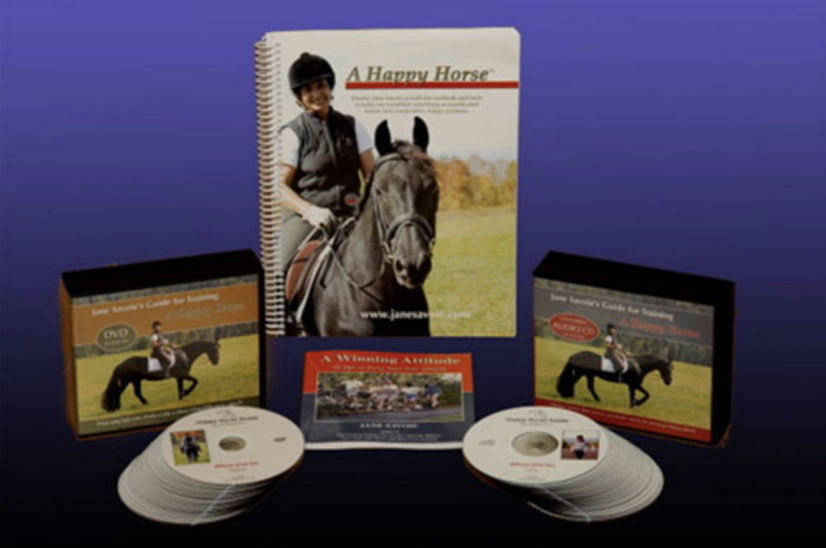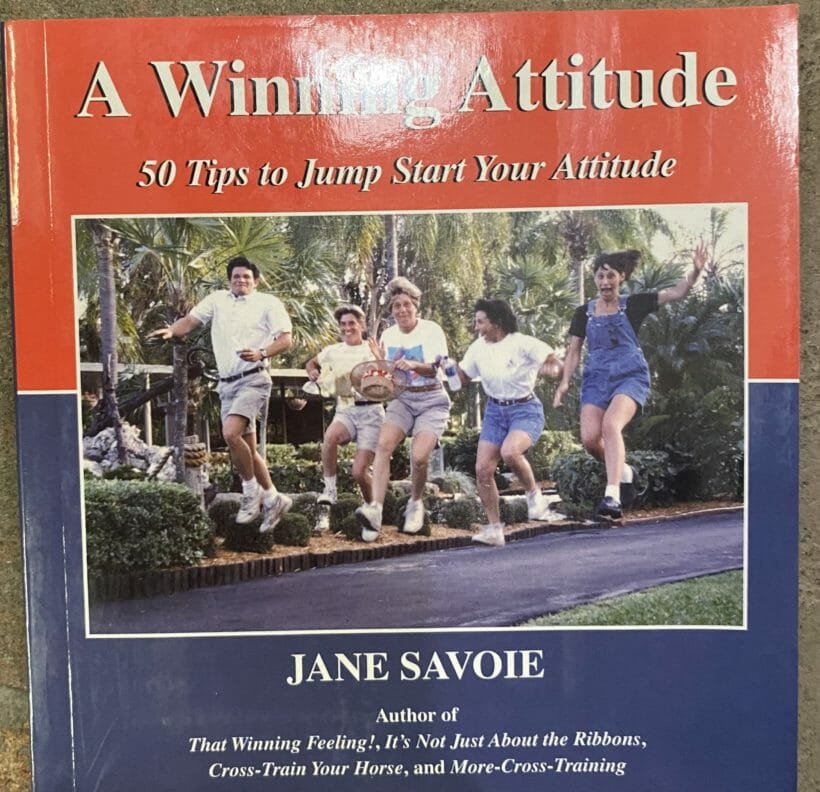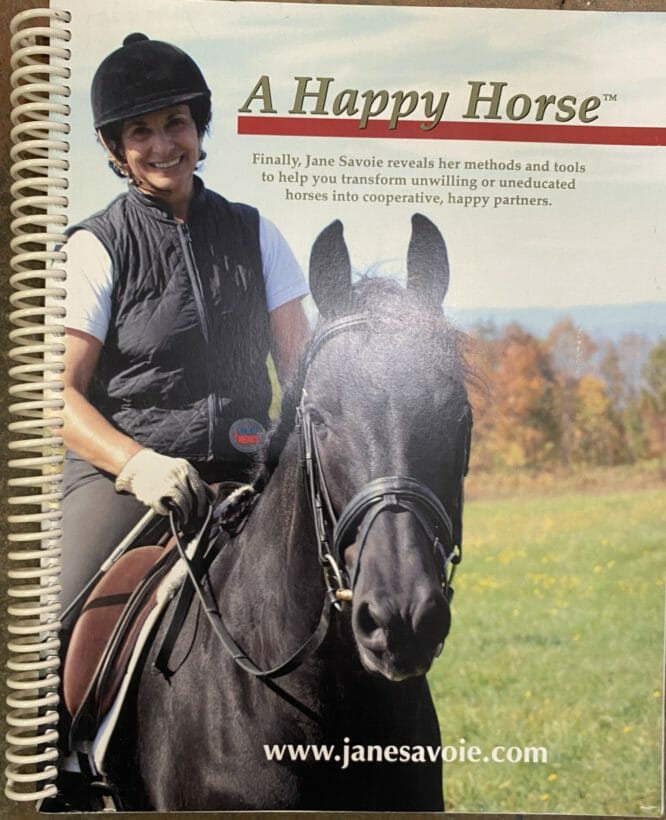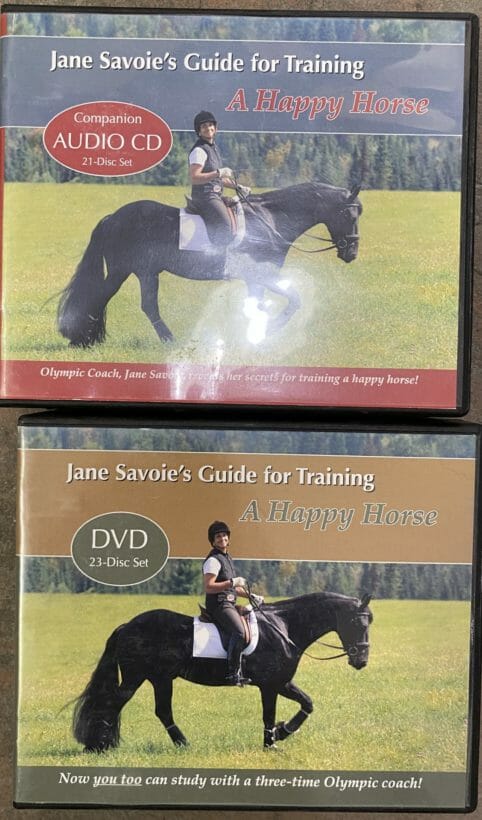Description
Here’s what you’ll find in the Guide to Training A Happy Horse:

- 20 DVD lessons that cover everything from how to use your aids to the training scale to all the movements and exercises from Training level through Third level.
- PLUS 3 bonus DVDs that cover some of the mental aspects of riding like exercises to help you relax, using visualization and self-talk to improve your skills, using music to help you with rhythm and tempo…and to have FUN!
- 20 CD lectures that cover the same material in the DVD lessons. Pop them in your CD player in your car or your Walkman when you’re exercising. The lectures reinforce everything you see in the DVDs.
- A BONUS CD on Problem Solving with the tools you’ve learned in the lessons.
- A 135-page manual that summarizes the lessons in a quick and easy Question and Answer, bullet point format. The manual also includes space for notes and a fill in the blank section to really be sure you absorb the main points.
- A Winning Attitude book to help you get your ride and your day off to a great start.
MODULE 1– TEACH YOUR HORSE THE EQUINE ALPHABET
In this module, you’ll learn how to develop a non-verbal language with your horse so that you can communicate more effectively. First, you’ll learn how to break down the individual aids (seat, legs and hands) so you can teach your horse the A, B, C’s of your new language. Later, you’ll combine the individual letters of the alphabet together to form words such as “canter depart” or “on the bit”, or “go sideways”.
WHOA AND GO
How Do I Teach My Horse to Go Forward?
Whose Responsibility is it to Maintain the Energy of a Gait?
How Do I Make My Horse Take Responsibility For Maintaining His Own Energy?
How Do I Decide How Strong My Correction Should Be?
What Are the Aids to “Go”?
How Do I Teach My Horse To React To Light Driving Aids?
How Do I Use Each of the Driving Aids?
How Do I Teach My Horse To React To My Driving Seat?
How Do I Teach My Horse To React To My Voice?
What Are the Aids to “Whoa” or Slow Down?
What Do I Do If My Horse Ignores My Light Aid to Slow Down?
USE OF THE AIDS
What Does Each Aid Control?
How Do I Use the Aids to Get a Specific Response?
How Do I Put the Letters Together to Form “Words” or Movements?
THE OUTSIDE REIN
Why Do Riders Forget to Use the Outside Rein?
What Does the Outside Rein Do?
Are There Some Exercises That Will Help Me Learn to Use My Outside Rein?
[$600 value]
MODULE 2–THE TRAINING SCALE
There’s a lot of confusion and conflicting information when it comes to horse training. But one thing most horsemen agree on is that the Training Scale is your guideline for training and problem solving.
In this module, you’ll learn about the six ingredients in the training scale as well as how to prioritize those six ingredients so you know what to work on first. (And second and third!)
RHYTHM AND SUPPLENESS
What Is the Training Scale?
What are the Six Ingredients in the Training Scale?
When Would I Adjust My Horse’s Tempo?
What Is Suppleness?
What Parts of My Horse’s Body Need to be Supple and Loose?
How Do I Know if My Horse Is Locked In His Poll?
How Do I Use My Aids to Supple My Horse’s Neck?
What is the Sequence of Aids for Suppling My Horse’s Neck?
How Do I Know if My Horse is Stiff in His Shoulders?
What are Some Exercises to Supple My Horse’s Shoulders?
CONTACT
What Kind of Bit Should I Use?
What Are the 5 Qualities of an Inviting Contact?
What Are the Five Rein Effects?
What is the “Work Area”?
CONNECTION
What is a Half Halt?
What Do I Need to Know About Connecting Half Halts?
What’s the Order of the Aids For a Connecting Half Halt?
How Do I Teach My Horse the Connecting Half Halt?
How Do I Know If My Horse is Honestly on the Bit?
What Should I Do If The Half Halt Isn’t Going through 100%?
How Often Should I Give Connecting Half Halts?
How Do I Keep My Horse on the Bit During Transitions and Movements?
Does the Connecting Half Halt Ever Last More than 3 Seconds?
Is the Connecting Half Halt Ever Shorter Than 3 Seconds?
What Do I Do if My Connecting Half Halt Isn’t Working?
IMPULSION AND STRAIGHTNESS
What Does Impulsion Mean?
Is Impulsion the Same as Going Forward?
When Should I Add Impulsion?
How Do I Go About Adding Impulsion?
What is a Straight Horse?
Is There More Than One “Kind” of Straightness?
What is Axis Straightness?
What is First Position?
How Can I Use First Position to Strengthen My Horse?
What Should I Do If I’m Having Trouble Getting First Position When My Horse’s Hollow Side is on the Inside?
COLLECTION
Why Do I Want to Collect My Horse?
What is Collection?
Why is it a Challenge to Collect a Horse?
How Can I Tell If My Horse is Truly Collected?
When Do I Start Collecting My Horse?
What’s the Difference Between Connection and Collection?
How Do I Collect My Horse?
How Do I Know When My Horse is Ready to Start the Advanced Lateral Exercises?
How do I Teach My Horse Collecting Half Halts?
What Do I Do if My Horse Ignores the Collecting Half Halt?
Have I Collected My Horse if He Takes Shorter Strides?
[$1000 Value]
MODULE 3–DEVELOPING LATERAL SUPPLENESS
Your horse needs to be supple both laterally as well as longitudinally. In this module, you’ll learn how to promote lateral suppleness (bend) by riding school figures and turns accurately.
CIRCLES
Why Are Circles Important?
Why Must Circles Be Ridden Accurately?
What Do I Need to Know to Ride an Accurate Circle?
What are the Bending Aids?
How Do I Know Which is the Inside or Outside of My Horse’s Body?
How Do I Mark Off an Arena If I Ride in a Field?
What are the Reference Points for a 20-meter Circle?
What Do I Need to Know About Corners?
How Do I Make My Horse More Ambidextrous?
How Do I Use “Benign Antagonism” to Help My Horse Become More Ambidextrous?
How Do I Make the Hollow Side “Stiffer”?
How Do I Make the Stiff Side “Softer”?
SERPENTINES, LOOPS AND TURNS
How Do I Ride a Serpentine?
How Do I Ride a Shallow Loop?
How Do I Turn On and Off the Centerline or Do Turns Across the School?
[$400 Value]
MODULE 4—DEVELOPING LONGITUDINAL SUPPLENESS
Your horse should also be supple longitudinally which means he can smoothly adjust his carriage or outline without interrupting the flow of his movement or balance. Transitions from gait to gait as well as transitions within the gait are two of the best ways to develop longitudinal suppleness.
TRANSITIONS
What is a Transition?
What Are the Aids for Upward Transitions?
What Are the Aids for Downward Transitions?
How Do I Teach My Horse to Respond to the “Stilled” Seat?
What Do I Do If My Horse Doesn’t Listen to My Back and Voice?
How Do I Know If I’m Using My Stilled Seat Correctly?
What Do I Do If My Horse Comes Off the Bit During Transitions?
What Else Do I Need to Know to Do Good Transitions?
LENGTHENINGS
What Is a Working Gait?
When Do I Start Lengthenings?
What Happens During a Lengthening?
What’s the Difference Between a Lengthening and a Medium or Extended Gait?
What Determines Whether or Not My Horse Does a Good Lengthening?
How Do I Create Engagement Before the Lengthening?
What Are the Aids for a Lengthening?
Do I Ask for Lengthenings in the Walk?
How Do I Help My Horse Keep the Same Rhythm and Tempo?
When is the Contact Too Heavy?
Is There Anything Special I Should Do With My Position?
What Are Some Good Images to Have in My Mind?
[$400 Value]
MODULE 5—INTRODUCTION TO LATERAL WORK
This module focuses on an introduction to teaching your horse to go sideways starting with the turn on the forehand and leg yielding. These exercises not only teach your horse to be obedient to the leg, but also create many other desirable gymnastic qualities. In the lesson on leg yielding, you’ll learn how to use variations of this exercise for its loosening, stretching, toe-touching benefits.
TURN ON THE FOREHAND
What is Lateral Work?
What are the Pros and Cons of the Turn on the Forehand?
How Do I Start the Turn on the Forehand?
What are the Aids for Turn on the Forehand and Leg Yielding?
LEG YIELDING
What’s the Difference Between Leg Yielding and the Other Lateral Exercises?
What are the Pros and Cons of Leg Yielding?
What are the Patterns and Places in the Arena for Leg Yielding?
If I’m in Rising Trot, Which Diagonal Should I Post On?
What Do I Do If My Horse Doesn’t Move Sideways Willingly?
Why is It So Important For Me to Keep My Horse’s Neck Straight?
What Do I Do If My Horse Loses Activity?
What Do I Do If My Horse Rushes?
Why Is It So Important to Ride to Specific Markers?
Can I Use Leg Yielding to Solve Some Common Problems?
[$400 Value]
MODULE 6—ADVANCED LATERAL WORK
As you continue to educate your horse, you’ll start to ask him to go sideways while he bends through his body. As a result of going sideways with bend in shoulder-in, haunches-in, turn on the haunches, and half pass, you’ll be able to collect your horse and shift his center of gravity toward his hind legs.
SHOULDER-IN
How Do the Advanced Lateral Exercises Differ From Leg Yields?
How Many “Tracks” Are There in Lateral Exercises?
What is Shoulder-In?
How Do I Decide Which Gait to Use When I Start Shoulder-In?
What’s the Difference Between First Position, Shoulder-Fore, and Shoulder-In?
How Do I Start Shoulder-In?
How Can I Tell If My Horse is Doing a High Quality Shoulder-in?
What Are the Aids for Shoulder-in?
What’s the Order of the Aids?
What Do I Do If My Horse’s Rhythm or Tempo Changes?
What Do I Do If My Horse Loses the Bend?
How Do I Get More Control over the Angle?
What Should I Do If I Have Trouble Controlling the Shoulders and End Up with a “Head and Neck-in” rather than a Shoulder-in?
Why Am I Tempted to Use an Indirect Inside Rein?
What Should I Do If My Horse’s Shoulders Feel “Glued” to the Rail?
What is Shoulder-Out?
HAUNCHES-IN
What is Haunches-in?
Is Haunches-In More Difficult Than Shoulder-In?
What is the Bend and Angle of Haunches-In?
What’s the Difference Between Haunches-In and a Crooked Horse?
What Are the Aids for Haunches-In?
What Do I Do First?
What Do I Do If My Horse Loses His Rhythm or Tempo?
What Do I Do If My Horse Loses His Bend?
What Do I Do If My Horse Loses the Angle?
What Else Can I Use Haunches-In For?
What is Haunches-Out?
TURN ON THE HAUNCHES
What is a Turn on the Haunches?
What Are the Aids for a Turn on the Haunches?
What is the Sequence of Aids for a Turn on the Haunches?
How Should I Introduce Turn on the Haunches?
How Do I Know If I’ve Lost Bend?
What Do I Do If My Horse Loses His Bend?
What Do I Do If My Horse Loses His Rhythm?
What Do I Do If My Horse Gets Nervous?
What Do I Do If My Horse Loses His Desire to Go Forward?
How Do I Know If I’m Using the Aids Correctly?
How Do I Control the Hind Legs?
What Else Can I Use Turn On the Haunches For?
HALF PASS
What is a Half Pass?
Where Can I Do Half Passes?
What Are the Aids for a Half Pass to the Left?
What is the Sequence of Aids for a Half Pass to the Left?
What Do I Do If My Horse Loses His Bend?
What Do I Do If My Horse Loses Impulsion?
What Do I Do If My Horse’s Tempo Is Either Too Fast or Too Slow?
How Do I Know If I’m Doing a Half Pass With Good Engagement?
What Else Can I Learn From Half Pass?
[$800 Value]
MODULE 7—OBEDIENCE AND BALANCE
A horse that is obedient and moves in good balance is a pleasure to ride. This module contains exercises that help promote both of these qualities. Learn the correct aids and some trouble-shooting techniques for exercises from a simple reinback to counter canter to the more advanced flying change.
REINBACK
What Does a Good Reinback Look Like?
What are the Aids for Reinback?
How Do I Start Teaching My Horse to Reinback?
What Should I Do if My Horse Doesn’t Back Up Correctly?
COUNTER CANTER
What is Counter Canter?
What Are the Aids for Counter Canter?
How Do I Introduce Counter Canter?
What Are Some Helpful Hints for Counter Canter?
What are the Most Common Problems in Counter Canter?
FLYING CHANGES
How Do I Prepare My Horse to Do Flying Changes?
What Do You Mean By “Collecting Half Halts”?
When Do I Give the Aids for a Flying Change?
What Are the Aids for a Flying Change?
Where is the Best Place in the Arena to Introduce Flying Changes?
What Do I Do If My Horse Rushes Off or Starts Bucking After the Change?
What Should I Do If My Horse Doesn’t Change Both His Front and Hind Legs?
What If My Horse Doesn’t Change at All?
What Should I Do If My Horse is Tense?
What Are Some Exercises I Can Do To Get Clean Flying Changes?
What If My Horse Changes Late in Front?
What Should I Do If My Horse Does a Clean Change But He Changes a Stride or Two After I Give the Aid?
What Should I Do If My Horse is Crooked in the Flying Change?
[$600 Value]
BONUS MODULE 8—IT’S ALL ABOUT YOU!
Even though it’s essential to have a clear-cut, systematic approach to training, you’re as much a part of the Happy Horse equation as your horse is. In this bonus module, you’ll learn how to use music to establish good rhythm and tempo as well as how to do some “off your horse” homework to improve relaxation and confidence.
USING MUSIC FOR RHYTHM AND TEMPO
Use music to develop your internal metronome
Learn the difference between rhythm and tempo
Use music to help you stay relaxed
Use music to energize a lazy horse or relax a tense horse
Use music to keep you focused on riding rather than on potentially “spooky” things
Use music as a creative expression of the relationship between you and your horse
Learn the elements that make up a competitive musical freestyle
How to find music that enhances your horse’s way of going
Pick music that suggests different movements like transitions or medium gaits.
Pick music that suits both you and your horse’s type.
Ride to music to just plain have FUN!
RIDER RELAXATION EXERCISES
How to break the cycle of tension for both horse and rider
Program your subconscious mind while at home to help you ride better
Learn why only “perfect” practice makes perfect
Relax by learning how to breathe diaphragmatically
Visualize “oneness” with your horse
Whistle or sing to help you breathe
Relax through progressive relaxation
Promote relaxation with Autogenics
Learn how to “scan” for tension
Anchoring-Your short cut to relaxation
USING VISUALIZATION AND SELF-TALK
Why willpower won’t help you ride better
Why directing your effort to your subconscious mind “works”
How to ride smarter not harder
How to increase self-confidence
How to change the software in your mental computer
What you need to know about effective visualization
The two things you must know about self-talk
How to avoid sabotaging yourself with the word “not”
[$600 Value]
